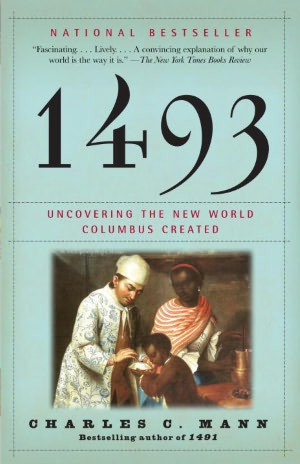The little ice age occurred between 1550 and 1750, and was marked by low temperatures worldwide. Crops failed, people skated on rivers that no longer freeze over. Since 1750, the earth has warmed. There is really no debate about that fact. The large majority of scientists believe that global warming has been largely due to greenhouse gases emitted into the atmosphere as a result of human activity.
1493: Uncovering the New World Columbus Created by Charles C. Mann describes recent scientific work suggesting that the little ice age may have occurred as a result of a reversal of human activity. Columbus' voyage in 1492 marked the beginning of the "Columbian Exchange". In the exchange, plants, animals and microbes were exchanged between the old world and the new world.
As a results of the diseases introduced into North America and South America, there were series of epidemics that decimated the Indian populations. The pre-Columbian Indian population had transformed huge areas of land into agriculture and burned large areas of forest undergrowth each year to make forests and prairies more attractive to the large animals that they hunted. When their populations crashed, the social systems to maintain the large agricultural areas also crashed and the use of fire to modify the forests and prairies also largely ceased.
In the following centuries, the forests returned and the prairies were somewhat overgrown. In the process, less Carbon Dioxide was put in the atmosphere and more was absorbed by plant growth. The idea is that the impact on reduction of greenhouse gases was so great that it cooled the world.
If true, this analysis could seriously undermine the few scientists who continue to hold that climate change is natural and that we are only seeing a natural process unrelated to human action.

No comments:
Post a Comment